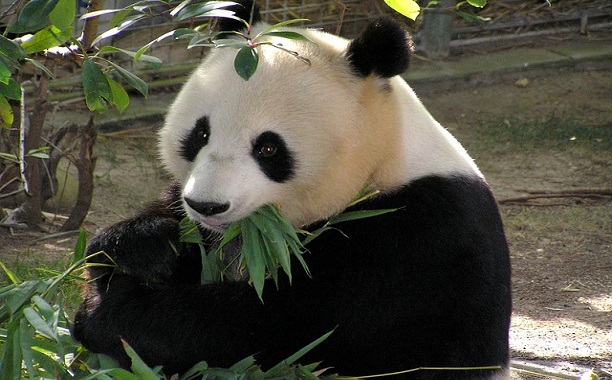China’s native giant panda has been referred to as the “couch potato” of the animal kingdom as a new scientific study suggests that giant pandas are slower than the slow-moving sloth and lazier than koalas. According to the study, giant pandas have low levels of thyroid hormones and do the bare minimum when it comes to physical exercise requiring them to eat a vegetarian diet.
Newsweek reports that pandas eat 27 pounds of bamboo daily, which takes them around 14 hours to find and eat, in order to ensure that they maintain the necessary level of energy to power them through the day. The study has found that the microbes located inside the pandas gut more closely resembles those found within a carnivore and as such pandas find it hard to break down plant matter, which they eat exclusively.
The study, published July 9th in the journal Science, reveals that as well as living off of bamboo, pandas don’t use much energy, expending only one-third of expected energy for a mammal of their size. The lack of energy used by the panda puts them in the same category as sloths, koalas and echidnas, all animals renowned for doing very little.
The pandas low thyroid levels, in particular the hormone thyroxine is only at 47 percent of the expected rate for an animal of the pandas size giving the panda low energy and decreased activity and digestion rates.
The giant panda, which is critically endangered due to its lack of interest in reproduction, are nonetheless expert survivors, eating a plentiful supply of bamboo and conserving energy, leading to their peace loving status as a docile, adorable and much loved animal worldwide. The pandas rarity is attributed to habitat loss and climate change by professionals rather than their low energy levels, slow digestive responses and lack of reproductive interest.
Intriguingly, the pandas gut is not suited to digesting bamboo which forms 99 percent of it’s diet, ABC News reports.
The studies founder, Fuwen Wei, biologist at the Chinese Academy of Sciences’ Institute of Zoology in Beijing claims that the pandas current state is the result of its long “evolutionary history.”
Giant pandas achieved this low metabolism through a suite of morphological, behavioural, physiological and genetic adaptations during their long evolutionary history. These reduced organ sizes likely contribute to their low energy demands.
At present, there are only 1,800 giant pandas left in the wild.
























